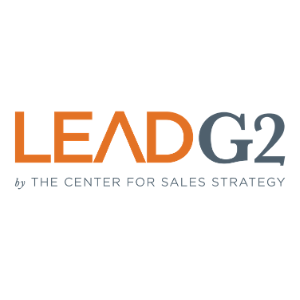Engage Your Prospect Like They’re a Human and Not Just an MQL
Today’s prospects are more in control of the buying process than ever before. They don’t care about what the next step in your sales process is or...
2 min read
 LeadG2
:
June 1, 2016
LeadG2
:
June 1, 2016


One of the topics of most interest to sales managers and marketers is what the future holds for sales and marketing over the next decade. Just imagine: the year 2050 is closer than the year 1980, and we know how much sales technology has changed from 1980 until today. The tools of yesterday's salesperson included beepers, fax machines, PalmPilots, spreadsheets, and a heavy dose of cold calling. Today, a modern salesperson’s toolbox includes a smartphone, laptop, tablet, and sophisticated marketing automation and CRM tools.
You would think that with all this technology at the tips of salespeople's fingers that they would be more productive and close sales at an even faster rate. However, this isn’t the case, because while the tools have become more sophisticated, power and leverage in the B2B buying cycle has shifted from the seller to the buyer. How did this happen? Well, it’s pretty simple to explain: the Internet.
In the 1990s, soon after the widespread adoption of the Internet, companies were able to develop websites that featured their products and services. These sites were like online brochures. It was at this point that buyers no longer needed to wait for a catalogue or a salesperson to update them on the newest products and take their orders. Many statistics point to buyers not contacting a salesperson until more than two-thirds of the sales process has been completed.
Sometimes the cause of the problem is also the answer to the problem. Just as the Internet and technology enabled companies to put their product information online, the Internet (coupled with technology) can provide the salesperson with a wealth of information about buyers and their purchase intents that can help rebalance the deck.
This wealth of information is sometimes called “lead intelligence” and it is collected from many sources—with the primary source being the Internet itself.
Modern lead intelligence tools can provide information to a seller about:
The technology that provides this type of lead intelligence to salespeople is called sales enablement technology, and many sales enablement software programs are quite affordable. Even with the affordability of these software programs, however, many salespeople aren't using sales enablement technology or lead intelligence. Some find the technology too difficult to understand, or they say that they “simply don’t have enough time to figure out how to use it” or they “don’t see the benefit of using it.”
As a sales manager, marketer, or salesperson, you have to stop and ask yourself, “Is it worth it to spend some time learning how to use these new tools and technology if it can help shift the balance of power back to me and my sales team?” Successful salespeople today are taking advantage of the new tools available to them, and they're seeing the impact.

Today’s prospects are more in control of the buying process than ever before. They don’t care about what the next step in your sales process is or...

The objective of all marketing strategies should be to generate revenue. The first step in generating revenue is generating leads. However, marketing...

If your sales and marketing teams are meeting on a regular basis to review the quality of leads that are coming in, there is a good chance that you...